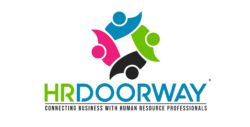budgets for L&D efforts. This budget is then distributed amongst employees, with trainees, future leaders, and other high potentials often receiving more training opportunities than others. Individuals may arrive at a company with vastly different knowledge and experience. L&D provides employees with a way in which to bridge skill gaps and develop into leaders. A well-known framework that connects performance management with L&D activities is the 9-Box grid. Based on people’s performance and potential ratings, HR department, together with managers, can advise different development plans.
What is Human Resource Management?
Let’s start with a brief definition. Human Resource Management, or HRM, is the practice of managing people to achieve better performance.
For example, if you hire people into a business, you are looking for people who fit the company culture as they will be happier, stay longer, and be more productive than people who won’t fit into the company culture. Another example is engagement. Engaged employees are more productive, deliver higher quality work and make customers happier. This means that if we can find ways to make employees more engaged, we help the company.
The HR department provides the knowledge, tools, training, legal advice, administration, and talent management, which is crucial to sustaining and advancing a company. This is what Human Resource Management boils down to optimizing company performance through better management of human resources. The next question is, who are these Human Resources?
What is a Human Resource?
It may feel a bit weird to refer to people as ‘human resources’. Human Resources are all the people that in one capacity or another work for or contribute to an organization.
These people make up a company’s workforce. They can be regular employees, for example, but also contractors. Especially with the rise of the gig economy, more and more people are starting to work for an organization on a contract basis without having a traditional labor contract. These people include independent contractors, workers provided by contract firms, on-call workers, and temporary help agency workers.
An independent contractor can be under contract for years at the same organization, while an agency worker can work at 20 different companies throughout one year. Because these people are all involved in the company to a different extent, the way they are managed and involved in the organization should also be different. Also, there are increasingly non-humans at work at the company.
In this case, we’re talking about the increase in robotization. Robots are increasingly involved in day-to-day work and the interaction between man and machine is becoming increasingly essential to the success of the organization. Although these machines are not considered ‘human resources’, there is a case to be made that they should be included in some way as they are part of the workforce.
The seven HR basics
When we talk about Human Resource Management, several elements are considered cornerstones for effective HRM policies. These cornerstones are:
Recruitment & selection
Performance management
Learning & development
Succession planning
Compensation and benefits
Human Resources Information Systems
HR data and analytics
1. Recruitment & selection
Recruitment and selection are arguably the most visible elements of HR. We all remember our first interview, right? Recruiting candidates and selecting the best ones to come and work for the company is a key HR responsibility. People are the lifeblood of the organization and finding the best fits is a key task.
The request for new hires usually starts when a new job is created or an existing job opens up. The direct manager then sends the job description to HR and HR starts recruiting candidates. In this process, HR can use different selection instruments to find the best person to do the work. These include interviews, different assessments, reference checks, and other recruitment methods.
Sometimes, when there are a lot of candidates, HR may deploy preselection tools. These tools help to separate the wheat from the chaff when it comes to suitable candidates. The successful candidates then continue to the next round, where they are interviewed and receive a more in-depth assessment.
2. Performance management
Once employees are on board, performance management becomes important. Performance management is the second HR basic. It involves helping people to become their best selves at work, boosting the company’s bottom line. Usually, employees have a defined set of responsibilities that they need to take care of. Performance management is a structure that enables employees to get feedback on their performance – to reach their best performance. Examples are formal one-on-one performance reviews, 360-degree feedback instruments that also take into account the evaluation of peers, clients, and other relations, and more informal feedback.
Usually, companies work with an annual performance management cycle, which involves planning, monitoring, reviewing, and rewarding employee performance. The outcome of this process enables the categorization of employees in high vs. low performers and high vs. low potentials.
Successful performance management is very much a shared responsibility between HR and management, where usually the direct manager is in the lead and HR supports. Good performance management is crucial. Employees who are empowered to their full potential, improve the efficiency, sustainability, and profit margin of a business. Employees which consistently underperform may not be a good fit for their role, or the company culture. These employees may need to be let go. This is also one of the basic responsibilities of HR.
3. Learning & development
People are the product of life experiences, the country and era they grow up in, and a range of cultural influences. Within HR, learning and development ensure that employees adapt to changes in processes, technology, and societal or legal shifts.
Learning and development helps employees to reskill and upskill. Learning & Development (L&D) is led by HR and good policies can be very helpful in advancing the organization toward its long-term goals. One of the HR trends for 2023 is bringing learning into day-to-day work and helping employees develop soft and hard skills that are aligned with organizational goals.
Many organizations have pre-defined budgets for L&D efforts. This budget is then distributed amongst employees, with trainees, future leaders, and other high potentials often receiving more training opportunities than others. Individuals may arrive at a company with vastly different knowledge and experience. L&D provides employees with a way in which to bridge skill gaps and develop into leaders. A well-known framework that connects performance management with L&D activities is the 9-Box grid. Based on people’s performance and potential ratings, HR department, together with managers, can advise different development plans.
4. Succession planning
Succession planning is the process of planning contingencies in case of key employees leaving the company. If, for example, a crucial senior manager quits his/her job, having a replacement ready will guarantee continuity and can save the company significant money.
Succession planning is often based on performance ratings and L&D efforts. This results in the creation of a talent pipeline. This is a pool of candidates who are qualified and ready to fill (senior) positions in case of someone leaving. Building and nurturing this pipeline is key to good people management.
5. Compensation and benefits
Another one of the HR basics is compensation and benefits. Fair compensation is key in motivating and retaining employees. One of the fundamentals of human resource management concerning pay is ensuring equity and fairness.
Making the right offer of pay is a key part of attracting the best talent. This must be balanced with the budget and profit margins of the company. HR should monitor pay increases, and set standards of merit. HR may also carry out a pay audit on occasion.
Compensation comprises primary compensation and secondary compensation. Primary compensation involves directly paid money for work, which often is a monthly salary and sometimes performance-based pay. Secondary benefits are all non-monetary rewards. This can include extra holidays, flexible working times, day-care, pensions, a company car and laptop, and much more. The goal here is to reward people in ways that motivate them.
6. Human Resource Information System
The last two HR basics are not HR practices but tools to do HR better. The first is the Human Resource Information System, or HRIS. An HRIS supports all the cornerstones we discussed above. For example, for recruitment and selection, HR professionals often use an Applicant Tracking System, or ATS, to keep track of applicants and hires.
For performance management, a performance management system is used to keep track of individual goals and put in performance ratings. In L&D, a Learning Management System (LMS) is used for the distribution of content internally, and other HR systems are used to keep track of budgets and training approvals. Compensation specialists often use a payroll system, and there are also digital tools that enable effective succession planning.
All these functionalities can often be done in one single system – the HRIS. Sometimes, however, the management of these functionalities is split up into different HR systems. The bottom line here is that there is a significant digital element to working in HR, that’s why we need to mention HRIS when talking about the HR basics.
7. HR data and analytics
The last of the HR fundamentals revolves around data and analytics. In the last half-decade, HR has made a major leap towards becoming more data-driven. The Human Resource Information Systems we just discussed is essentially a data-entry system. The data in these systems can be used to make better and more informed decisions.
An easy way to keep track of critical data is through HR metrics or HR KPIs. These are specific measurements that answer how a company is doing on a given measurement. This is referred to as HR reporting. This reporting focuses on the current and past state of the organization. Using HR analytics, HR can also make predictions. Examples include workforce needs, employee turnover intention, the impact of the (recruitment) candidate experience on customer satisfaction, and many others. By actively measuring and looking at this data, HR can make more data-driven decisions. These decisions are often more objective, which makes it easier to find management support for these decisions.
Conclusion
You now know the 7 Human Resource Management basics. None of these HR fundamentals are isolated. They all interact and affect each other. Think of these 7 basics as building blocks – strong management of each fundamental element contributes to the strength of the next. Collectively, these HR fundamentals enable a workforce not only to perform better but to perform at its very best.
-AIHR

